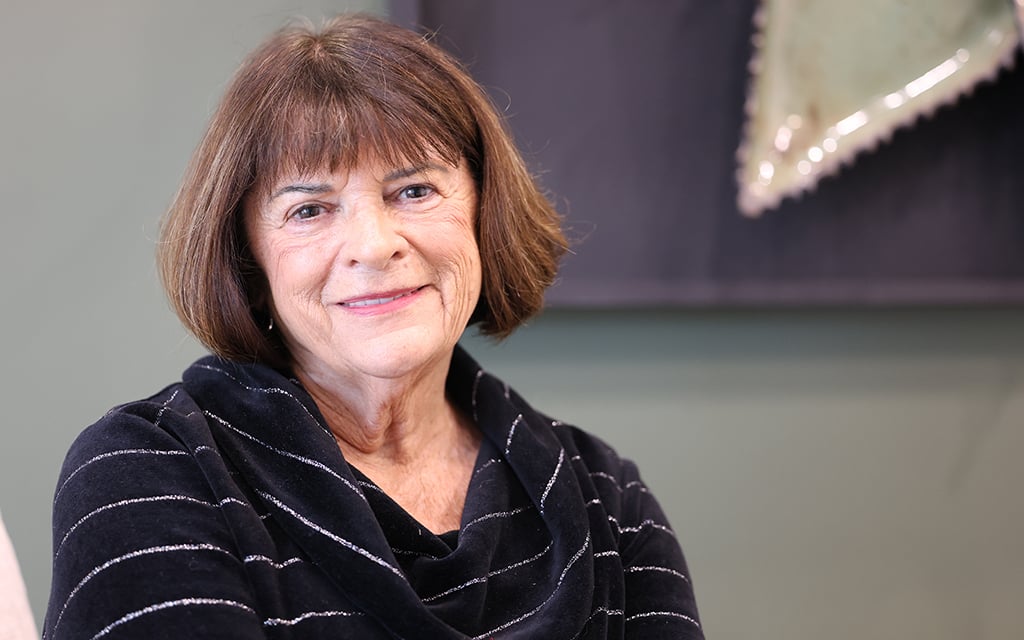
A view into the emergency room at Banner-University Medical Center Phoenix. (File photo by Johanna Huckeba/Cronkite News)
PHOENIX — The National Center for Health Workforce Analysis predicts Arizona will have 28,100 fewer registered nurses than are needed in the state by 2025, a bigger disparity than in any other state in the country.
The evolving nursing shortage across the country already has caused delays in care; researchers warn the continuing shortage could cause clinical errors that lead to higher mortality rates for patients.
The nursing shortage particularly impacts critical access hospitals, which are rural community hospitals designated by the Centers for Medicare and Medicaid Services, and tribal health care facilities that provide care to Native American communities in rural areas. According to Heidi Sanborn, president of the Arizona Nurses Association, seeking care at these facilities could mean hour-long waits in emergency department hallways.
“We know it’s more difficult to recruit into rural areas,” said Sanborn, a registered nurse. “So we have nurses graduating from schools, but may not know that a rural area needs their help, may not live in that area and there may not be as many people in that area who are already trained as a nurse.”

Heidi Sanborn, R.N., president of the Arizona Nurses Association, says, “Anybody who has an interest in the nursing workforce is working really hard to try to fill those gaps.” (Photo courtesy of Heidi Sanborn).
Dianne Kandt, R.N., worked as a contract nurse in the emergency department of the Sells Indian Hospital, a tribal health care facility in the Tohono O’odham Nation. Contract and travel nurses are professionals who work for a set amount of time at a particular facility. Kandt said remote locations force rural facilities to rely on travel nurses and are particularly affected by a nurse staffing shortage that’s getting worse.
“We saw all ages and we saw everything from trauma to babies. We did on occasion deliver babies for people who couldn’t get to Tucson in time,” Kandt said. “It’s a very, very rural facility in the Sonoran Desert, (about) 65 miles southwest of Tucson.”
But the problem is not confined to rural facilities. The shortage affects the entire state, including cities like Phoenix and Tucson. And a growing number of rural patients are traveling hours toward cities that have more care options, increasing already overburdened facilities. Without adequate nurse staffing, urban hospitals are seeing overflowing emergency rooms and long wait times.
Kathy Malloch, consultant for an Arizona State Board of Nursing nurse training program and former president of the Arizona Board of Nursing, finds that many staff nurses are leaving inpatient hospitals to work in outpatient centers and clinics.
“The schedule is better for them,” Malloch said. “They can work Monday through Friday on an 8-to-5 schedule or whenever the clinic is open, as opposed to the inpatient hospitals, which is 24 hours a day, seven days a week, and they’re always having to cover those shifts to make sure that care happens.”
The COVID-19 pandemic exacerbated the ongoing shortage, causing burnout and vacancies that led to poor staffing ratios. Post-pandemic worklife for nurses in large facilities could mean an increase in assignments.
“I think their assignments are often much more than they can handle,” Malloch said. “Nurses tend to be really caring people, and they don’t want to not take care of patients, even when there’s too many. So then they get stressed, and burn out.”
A prominent cause for the shortage is the aging workforce. States like Arizona, with a rapidly growing population of older adults, anticipate needing more nurses to care for an aging population with more health needs.
Malloch worries that short-staffed hospital units are at risk for department closures as the nursing shortage intensifies. Unit closures could result in a lack of availability and delays in treatment, which can increase illness, risk of injury and infections.
“It’s pretty devastating in terms of negative effects,” Malloch said.

Kathy Malloch, R.N., former president of the Arizona Board of Nursing, says nurses want to take care of patients, “even when there’s too many.” (Photo by Jack Orleans/Cronkite News)
One way the problem is being addressed is through more nursing programs. In 2022, Arizona passed HB 2691, which allocated funds to support Arizona nurses and nursing students in a variety of ways. Some, like the 1803 Grant, help teach and train teachers who supervise clinical rotations. Other portions of the bill focus on additional funds for college and university programs across the state.
Yet, with the most significant nursing shortage expected in the state by 2025, advocates are working to find innovative ways to ease the shortage. Potential improvement strategies focus on assignment management, generational job satisfaction, more streamlined paths toward training and education, and emotional support. Health experts are also discussing retention initiatives geared toward younger and incoming nurses who tend to move around departments and positions.
“The problem is so complex that there’s just lots of different ways that we can all lean in to try to make it better,” Sanborn said. “I see across industries. Anybody who has an interest in the nursing workforce is working really hard to try to fill those gaps.”
While these efforts attempt to mitigate the immediate shortage, some health care professionals predict more problems in 2025. Progression toward improvement is essential, they said, as nurses are a significant pillar in community health.
“For the 22nd year in a row, nurses have just been voted the No. 1 most trusted profession,” Sanborn said. “We all have that personal tie to nursing because of the broad reach of nursing care. I think that’s why you are seeing people stand up and take note of the nursing shortage. It’s a very personal story for each and every one of us.”


